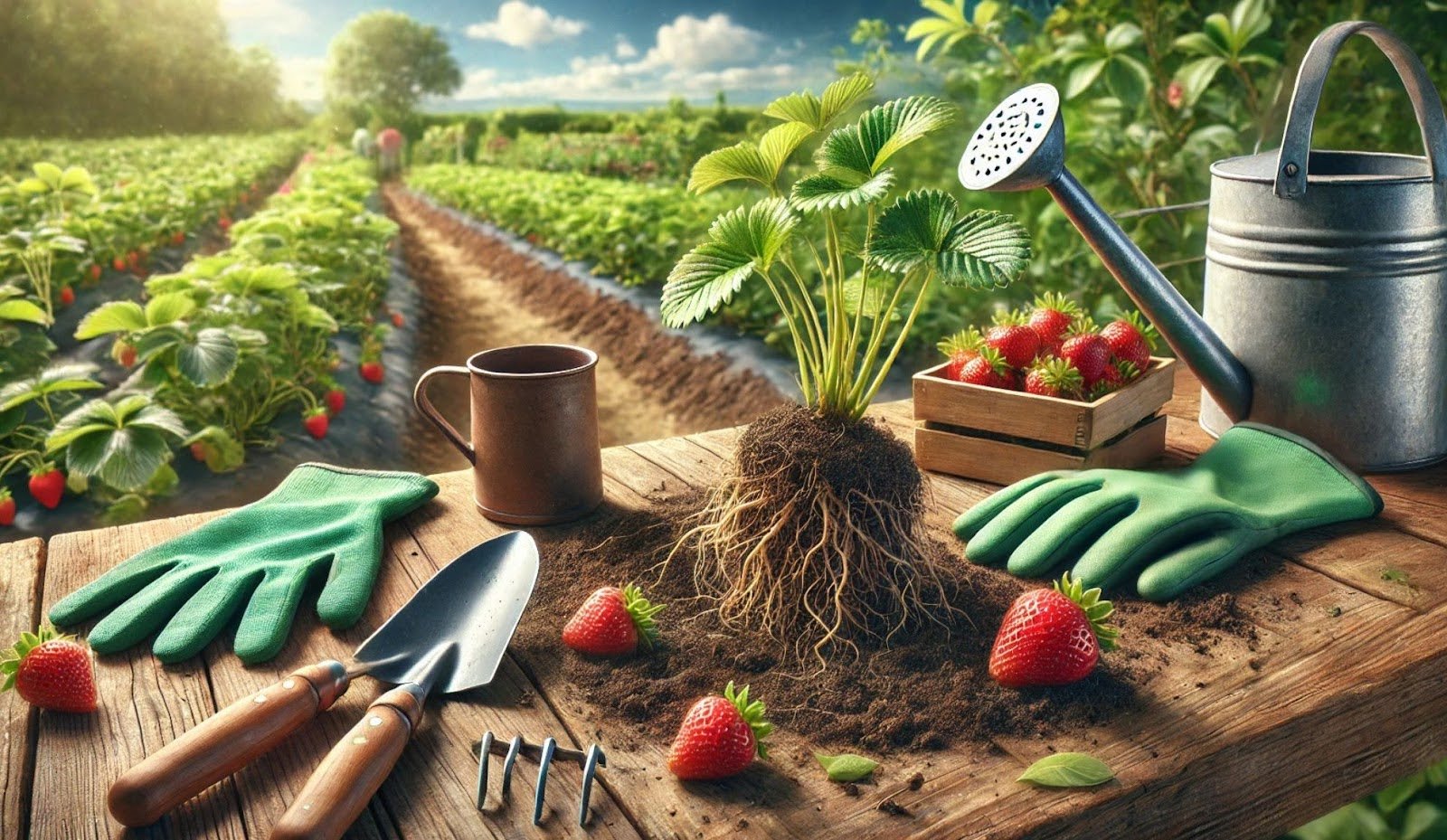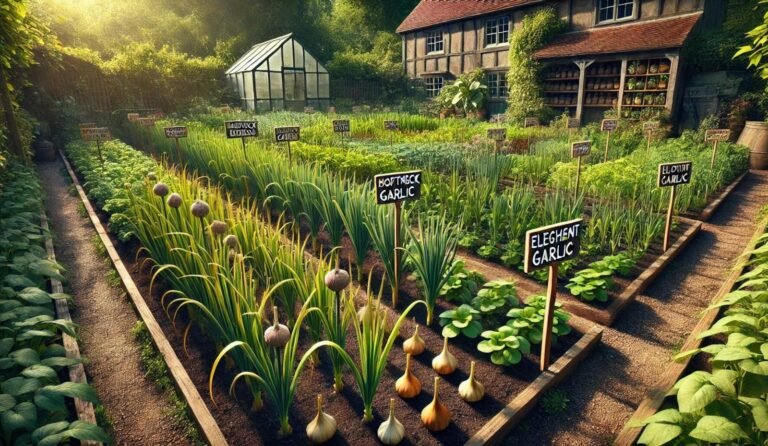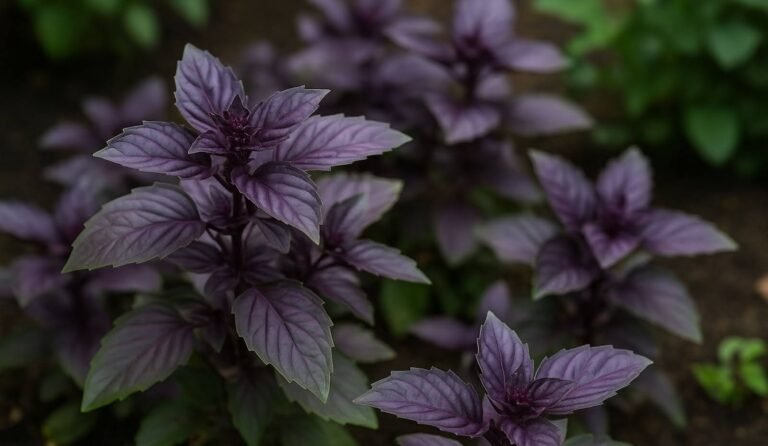Planting Bare Root Strawberry Plants: A Beginner’s Step-by-Step Guide
Planting bare root strawberry plants is the secret to growing sweet, juicy berries right in your backyard or even indoors. These no-fuss, dormant plants are affordable, easy to plant, and yield a fresh harvest in no time.
Wondering how to get started? From prepping the soil to caring for your plants, this guide has you covered. Whether you’re a seasoned gardener or a total newbie, planting strawberries this way is a game-changer. Let’s dive into the dirt and grow something delicious!
What Are Bare Root Strawberry Plants?
When it comes to growing strawberries, bare root plants are a gardener’s best-kept secret. These dormant strawberry plants are sold without soil around their roots, making them lightweight, compact, and easy to handle. Farmers harvest them during the dormant season, clean off the soil, and prepare them for shipping in this simplified form.
Once planted, these bare root plants spring to life, developing strong roots that lead to vigorous growth and an abundant harvest. Unlike potted strawberry plants, bare root strawberries are ideal for gardeners looking for an affordable and efficient way to grow their own fruit. They can be planted in garden beds, raised planters, or even containers, making them versatile for backyard gardens and indoor setups alike.
Why Choose Bare Root Strawberry Plants?
If you’re debating between bare root and potted strawberry plants, here’s why the former often wins:
Cost-Effective: Bare root plants are usually more affordable than potted plants. You can purchase more plants for less money, making them perfect for larger strawberry patches.
Better Establishment: Without the constraints of a pot, bare root plants can establish their roots directly in the ground, adapting quickly to their new environment.
Easy Storage and Transport: Compact and lightweight, bare root plants are easier to ship and store than their soil-filled counterparts.
Lower Disease Risk: Because they’re dormant, bare root plants are less likely to harbor pests or diseases compared to actively growing plants.
Varieties of Bare Root Strawberry Plants
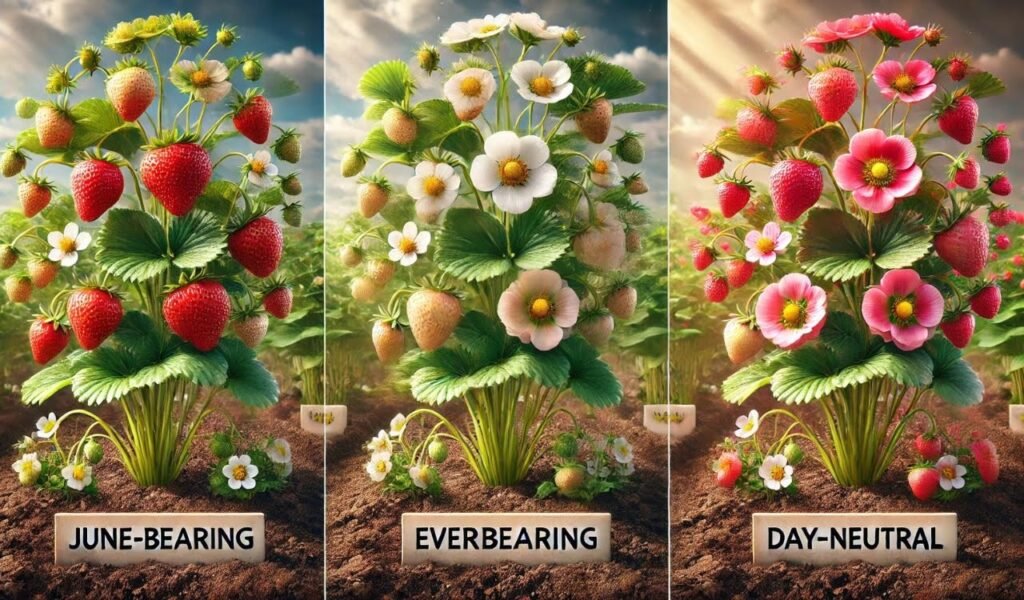
Not all strawberry plants are created equal. Choosing the right variety depends on your climate, space, and intended use for the fruit. Here are the three main types:
1. June-Bearing Strawberries
These plants produce one large crop annually, typically in late spring or early summer. They’re ideal for gardeners who want a large harvest for freezing, preserving, or making jam. Examples include ‘Honeoye,’ ‘Chandler,’ and ‘Camarosa.’
2. Everbearing Strawberries
These produce two to three smaller harvests per year: one in spring, one in summer, and sometimes a smaller one in fall. They’re great for those who want fresh strawberries throughout the growing season. Popular varieties include ‘Ozark Beauty’ and ‘Quinault.’
3. Day-Neutral Strawberries
Day-neutral varieties produce continuously from spring until frost, as long as temperatures remain favorable. They’re perfect for consistent yields over an extended period. Examples include ‘Seascape’ and ‘Albion.’
How to Store Strawberry Bare Roots Before Planting
Ideally you plant bare-root strawberries promptly after receiving them but that’s not always possible. Under certain conditions, you can store them for a maximum of two weeks. Most likely, the plants will have dried out during shipping.
Keep them in the original plastic bag and mist them very lightly with water. Do not get them wet or even damp, as excess moisture causes them to mold. Place the bag (if it is not perforated, leave the top of the bag open) in the crisper of your refrigerator.
Rehydrating Bare-Root Strawberries Before Planting
There is no unanimous view whether strawberry bare roots should be soaked to rehydrate them right before planting. Some growers recommend it, others tell you not to. If you decide to rehydrate the bare roots, submerge them in a bucket of hand-warm (never hot) water for a maximum of 1 to 2 hours. Do not leave them in the water for longer than 2 hours.
Planting Bare Root Strawberry Plants
For best results, bare root strawberries should be planted in early spring but hold off until the threat of frost is over. The hole should be deep enough to accommodate the roots and approximately twice as wide to afford them plenty of room. If necessary you can prune the roots up to around a third of the way to fit the space.
Adding a layer of garden compost to the bottom of the hole before planting your new strawberries will help them off to a great start. While you prepare the soil, soak the carefully untangled plant roots in warm, but not hot, water for around 30-60 minutes. Make sure you only soak the roots as soaking the crown (the part of the plant right above the roots) may result in the plant rotting.
When you’re ready, delicately spread the roots into the hole and cover it with soil. Be sure to check that the bottom of the crown is right at soil level and not buried underneath and that no roots can be seen above ground. Finally, give the plant good watering to stimulate growth.
Planting strawberries from bare root in beds
Planting bare root strawberries in a raised bed allows for the plants to grow without becoming pot-bound. There are a few differences to note though. Firstly, ensure that you remove any weeds as your strawberry plants won’t flourish as much if they are around. Secondly, after a few years separate the strawberries as runner plants can quickly take over a space.
Planting bare root strawberry plants in pots
If you are planting your bare root strawberries in pots, ensure that the pot has enough room to not only accommodate the current roots, but allow them to grow over the summer. A 3-litre pot is a great introductory size and will allow your strawberry plants to thrive throughout the year.
Pot grown strawberry plants take more watering than in raised beds, ensure that you maintain soil moisture by watering daily in the morning or early evening after the sun has gone down.
Where to Plant
Strawberry plants love sunshine and produce the most fruit when planted in a sheltered spot in a bright sunny area of the garden. Placing your new plants in a spot with full sun will help produce high-quality fresh strawberries. One of the best things about strawberry plants (aside from their juicy berries) is that they are quite versatile in where they can be planted.
Strawberries will do well in the ground, containers, pots, and even hanging baskets. You may wish to use a grow bag to offer your new plant some protection from the cold and wind as well as from pests such as snails and slugs, who also consider strawberries a tasty treat.
Grow bags, containers and hanging baskets have the bonus of letting you move your strawberry plant around from time to time, allowing it to soak up optimum levels of sunlight. To plant strawberries in grow bags, fill them with potting soil and ensure that they are watered regularly.
Caring for Bare Root Strawberry Plants
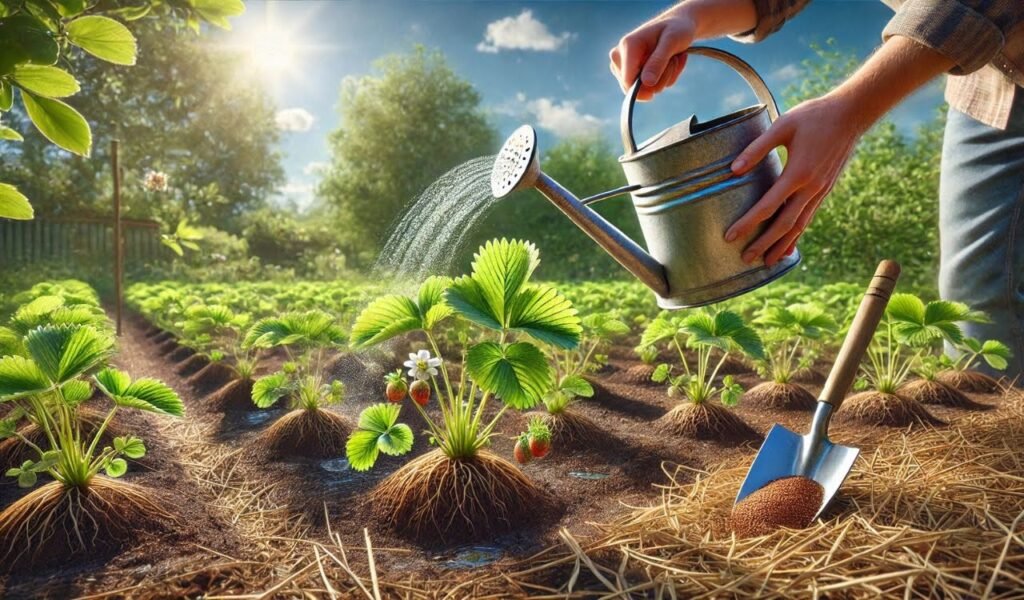
Once planted, strawberries need consistent care to thrive:
Watering Tips
Keep the soil evenly moist but avoid waterlogging. Water at the base of the plants to prevent fungal diseases caused by wet leaves.
Fertilizing
Use a balanced fertilizer (e.g., 10-10-10) after the plants start showing new growth. Avoid over-fertilizing, as this can lead to lush foliage but fewer berries.
Mulching
Apply organic mulch like straw or pine needles around the plants. Mulch helps retain soil moisture, suppress weeds, and keep the fruit clean.
Pruning and Maintenance
Remove Runners: Unless propagating new plants, cut off runners to encourage better fruit production.
Pinch Flowers: For first-year plants, remove flowers to strengthen roots for future yields.
Pest and Disease Management
Managing pests and diseases in your strawberry garden doesn’t have to be complicated. To keep slugs and snails away, sprinkle crushed eggshells or diatomaceous earth around your plants. For aphids, introduce ladybugs or use neem oil, and to deter spider mites, increase humidity around your plants. Prevent diseases by giving your plants plenty of space for airflow, watering at the base to keep leaves dry, and rotating crops each year.
When it’s time to harvest, pick strawberries that are bright red and firm, ideally in the morning when they’re cool. Gently twist or snip the berries from the stem to avoid damage. Store unwashed strawberries in the fridge for up to five days, or freeze them by washing, drying, and laying them on a baking sheet before transferring to a freezer bag. With a little care, you’ll have healthy plants and delicious berries to enjoy!
Harvesting and Storing Strawberries
The best time to harvest strawberries is when they’re bright red, firm, and fully ripe—preferably in the cool morning hours for maximum flavor. To pick them without harming the plant, gently twist or snip the berries from the stem.
Store your unwashed strawberries in the fridge for up to five days to keep them fresh. If you have more than you can eat right away, freeze them by washing, drying, and spreading them out on a baking sheet. Once frozen, transfer them to a freezer-safe bag for long-term storage.
Troubleshooting Common Problems
No Flowers or Poor Growth: Check soil fertility and sunlight levels.
Yellowing Leaves: Inspect for overwatering or root issues.
Fungal Diseases: Improve spacing and avoid overhead watering.
FAQ
What are bare root strawberry plants?
Bare root strawberry plants are dormant strawberry plants shipped without soil. They are lightweight, cost-effective, and easier to plant than potted plants.
When is the best time to plant bare root strawberry plants?
The ideal time is in early spring or late fall, depending on your local climate. Plant when the soil is workable and before the plants break dormancy.
How do I prepare the soil for planting?
Ensure the soil is slightly acidic (pH 5.5–6.5), well-draining, and enriched with organic matter like compost. Remove weeds and loosen the top 6–8 inches of soil.
How deep should I plant bare root strawberry plants?
Plant the crown (where the roots meet the stems) at soil level. Avoid burying the crown too deep to prevent rot.
How far apart should I space the plants?
Space the plants 12–18 inches apart, with rows 2–3 feet apart, to allow proper airflow and growth.
How often should I water the plants?
Water regularly to keep the soil moist but not waterlogged. Avoid overhead watering to prevent fungal diseases.
Final Thoughts
Planting bare root strawberry plants is an affordable, beginner-friendly way to grow your own fresh berries. Whether you’re planting in a garden, raised bed, or containers indoors, the steps outlined in this guide will set you up for success.
With a little patience and care, you’ll soon enjoy the satisfaction of picking your own sweet, juicy strawberries right from your garden. Take the first step today and start planting—you’ll be reaping the rewards all season long!

